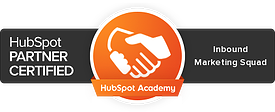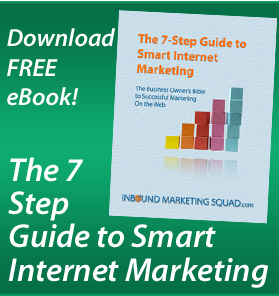In my previous blog post: What the America’s Cup and Marketing Strategies Have in Common, we discovered that each time we change our course (tack) to reach the finish line,  we lose ground and momentum. That’s because it takes time and energy to: change direction, reset the sails, fill them with wind to overcome the inertia and build up speed over the water.
we lose ground and momentum. That’s because it takes time and energy to: change direction, reset the sails, fill them with wind to overcome the inertia and build up speed over the water.
It’s the same with marketing strategies. Every time we change / add / delete a marketing strategy, it changes how we must align our resources to get across the finish line first. Sometimes such changes could even deplete our resources more quickly or deeply. Any change can cause us to lose prospects or customers. In fact, each change we make gives our competitors the time, space and opportunity to steal our customers away or capture prospects who might have become ours.
So how do you know which marketing strategies to pick in the first place? What helps you decide it’s time to change marketing strategies or add another one? Here are 5 tips from successful business owners and marketing experts to help you choose the marketing strategies that are right for your business:
1. Have A Reason to Market Your Business
Simon Sinek said, "People don't buy what you do, they buy why you do it."
This explains why some companies win and some companies lose. The ones that win know the reason they are in business. That reason is visible in everything they do and it's so compelling that their customers believe in it, too. Sinek calls it the WHY—not what you do, but why you do it. I've worked with this idea over the years and I found it to be absolutely true. I've taken the time to figure out my own WHY and done workshops to help my clients to define theirs.
Why I run.
You might think I run everyday to improve my fitness. I don't. Fitness is a result of running—it's a What not a Why. Here's why I'm doing it: running makes me feel physically and mentally balanced, resilient and creative. My running “Why” has so many benefits for my life, it helps me get over those times when my motivation for the work is low.
Why Are You Marketing Your Business?
If you tell me you're marketing your business in order to get more sales, I'll tell you "that's not why you're doing it." You market your business so you can do more of your Why. Sales are just a result, not the reason.
Examples of a Why:
Hero Design Studio
To be a catalyst for the success of our clients and friends.
Nike
To bring inspiration and innovation to every athlete in the world.
Apple
To challenge the status quo and help people realize their full potential.
So...What Is Your “Why”?
I encourage you to watch Simon Sinek's TED talk and to visit his website. Understanding why you're marketing is the key to defining a successful path to your goals. So, start there and keep at it until you can answer: What Is Your Why?
— Jeff Mason of Hero Design Studio, a design and inbound marketing agency.
2. Know Where You're Headed and When You've Arrived
Glaringly obviously I suppose, but if you don't know where you're headed, how will you know you've arrived? Moses and the Israelites wandered through the desert for decades, but they knew they were heading to the Promised Land. [I think they hold the world's record for the longest trip over the shortest distance, but well, I digress.] They also knew when they arrived because the Lord promised them a land "filled with milk and honey."
The point is, you can't pick a strategy if you aren't specific about what the strategy is supposed to help you achieve. The more specific you are about the objective and how you know when you've reached it, the simpler it will be for you to pick the right strategy(ies).
So...where are you going? Where's the hill you've got to climb, how high up, and what will tell you that you’ve arrived?
- Increasing sales from end customers by 30% by June?
- Increasing web traffic in the UK by 68% by the end of Q2?
- Decreasing health industry customer turnover by 12% by year end?
- Decreasing the time it takes to close a sales from 3 months to 1 within the next 6 months?
If the strategies you're considering will take you too far off course, it may cost you far more [lost customers, prospects, increased expenses, time in market] to get back on track than any gains you get from the strategy.
Be clear about your heading and arrival and you'll have saved yourself endless heartache.
—Mary Planding, strategic marketing consultant and founder/CEO of the hybrid marketing services agency, Inbound Marketing Squad
3. Does This Strategy Add To or Take Away From Your Profit?
One of the most important questions you need to know before choosing a marketing strategy is "What's the average profit from a new customer in the first year?"
The reason the average profit is such an important amount is that it will be used to determine the most you should invest to land a new customer. So pick a marketing strategy that allows you to acquire new customers and still remain profitable.
Calculating this can be a bit tricky if you don't use cost accounting for keeping track of this level of detail. So a quick approximation of that is:
- Take your gross revenue
- Subtract your expenses
- That leaves you with pre-tax profits
- Divide your pre-tax profits by how many active customers you had last year.
- The result is the average profit per customer.
As an example, let's say your gross revenues are $5 million and your expenses were $4 million. That would leave you with a pre-tax profit of $1 million. This means you have a 20% pre-tax profit margin. If you had 500 active customers last year it would mean your average customer value for one year would be $2,000 ($1 million divided by 500).
Now you know you can invest up to $2,000 to land each new customer and still break even.
If customers continue to buy from you for an average of three years, then years two and three will be very profitable. If on the other hand they only stay a customer for a year, you need to spend no more than 90% of the first year’s value since you won’t see any more profit from that customer coming in after that.
—Dan Swanson, a consultant who helps maximize the amount of money you can pocket when selling your business
4. Have the Courage to Say No
If a marketing strategy is a filter, a way of directing resources and identifying outcomes, one of the biggest challenges for a business owner or marketer is having the courage and foresight to say "no." Since many marketing people are driven by creativity and ideas, saying "no" can be downright painful.
Why are we pulled to say "yes" when we shouldn't?
- Money.
- Love of a great idea.
- Desire to help a worthy effort.
- Our doubts about limiting the reach or scope of our business or organization.
Think about "no" as a personal lifejacket. Taking on certain projects can be like taking on water as you sail. What will slow down the pace to your business objectives? With the exception of making payroll, many distracting projects don't really fuel your long-term goals.
For us at WSMG, our next significant piece of business needs to be an inbound marketing project using HubSpot software, since we’re new partners and need to build our skill set here. It's going to be tough to say "no" to the one-off web design requests or marketing strategy outlines, since revenue is also important. But for the next time intensive project, it's inbound or "no." Well, "no, thank you."
—Ilene Rosenthal, Chief Marketing Partner, White Space Marketing Group
5. Know What You're Great At AND What You Stink At
The single biggest mistake I often see business owners or marketers make is choosing a strategy that's cool, neat, hot, but instead of playing to their strengths, it draws unwanted attention to their weaknesses. The net result is their efforts negate any potential gains they've made.
Sometimes they choose a strategy thinking it will make them fix their weaknesses. And in some cases (although rare), it will. So unless they've planned to invest in the resources to make this strategy work for the long term, it usually and almost always, falls apart.
In the late 90s one of my clients was a small web hosting and email services company. They'd been doing well for a few years, but then their growth began to slow. They were getting lots of requests from customers for new services, but how to choose which service to offer? Which new service would bolster their income trajectory, giving existing accounts a great reason to stay and an even better way to attract new ones?
Turns out they had multiple choices of service offerings, all of which would improve their sales. But which one should they pick? Such product marketing decisions are very complex because they are interdependent on many factors. Their analysis of demand, price points and lifetime value of a customer led them in two different directions. The final decision criteria were based on their resources — the skills of their existing employees, the technologies they owned, licensed or could license, the money they had available to invest in developing the new services, and the amount of time it would take to bring in each new service to market — led them in two different directions.
One service offering, although it could produce more revenue, would have meant a huge investment in new personnel, new processes, redoing their technology infrastructure, and take almost a year to pull off — with no guarantee it would be profitable fast enough to pay back the investment.
Instead, they decided to provide an eCommerce solution. They had the talent in-house to quickly program and design "storefront" templates. They knew that programming a shopping cart was something they weren't good at. So intead, they tapped one of their existing partners with whom they negotiated a fair licensing deal for their shopping cart code. Lastly, their finance folks had an excellent relationship with a payment gateway provider and were able to create an attractive co-marketing deal. This web hosting company launched a whole new service in less than 4 months because they built on their strengths, leveraged their assets, and recognized what they didn't do well. Their new eCommerce solution made sales soar so high that they attracted an unexpected M&A offer, turning the founders into millionaires overnight.
The lesson:
- KNOW what you're good at and what existing resources you can leverage.
- ACCEPT what you stink at (no one is good at everything)
- Be willing to invest and change that weakness if it needs to become a key competitive advantage for you.
- Or acquire it by licensing or partnering.
—Mary Planding, strategic marketing consultant and founder/CEO of the hybrid marketing services agency, Inbound Marketing Squad







